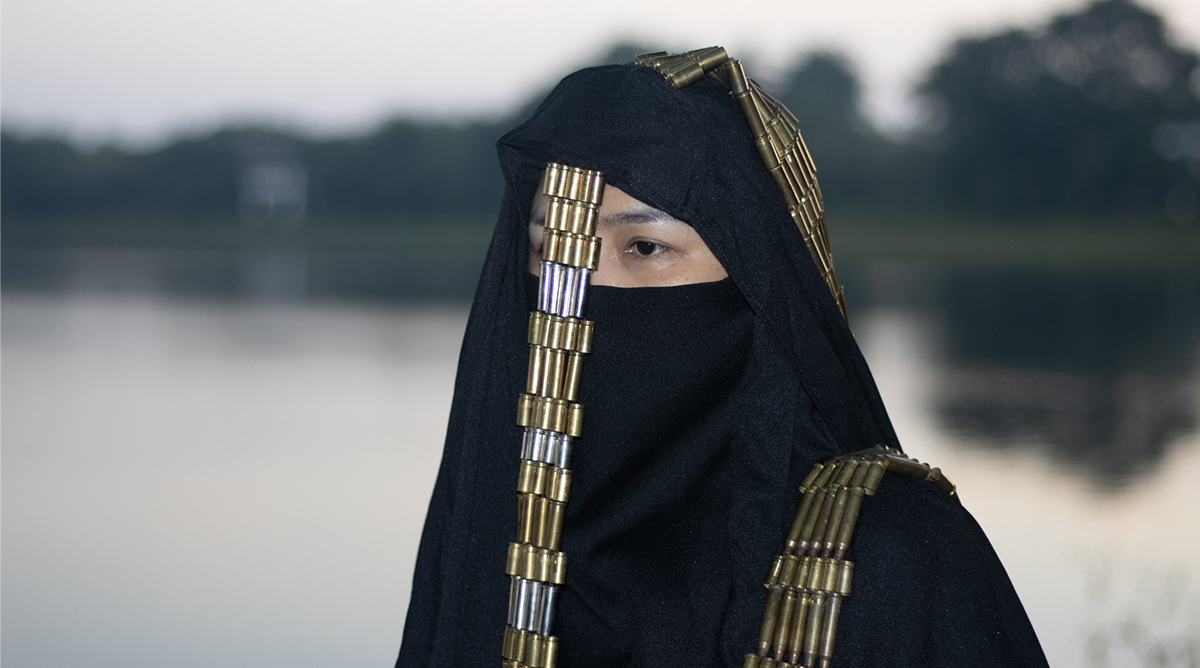
Asst. Prof. Dr. I-na Phuyuthanon
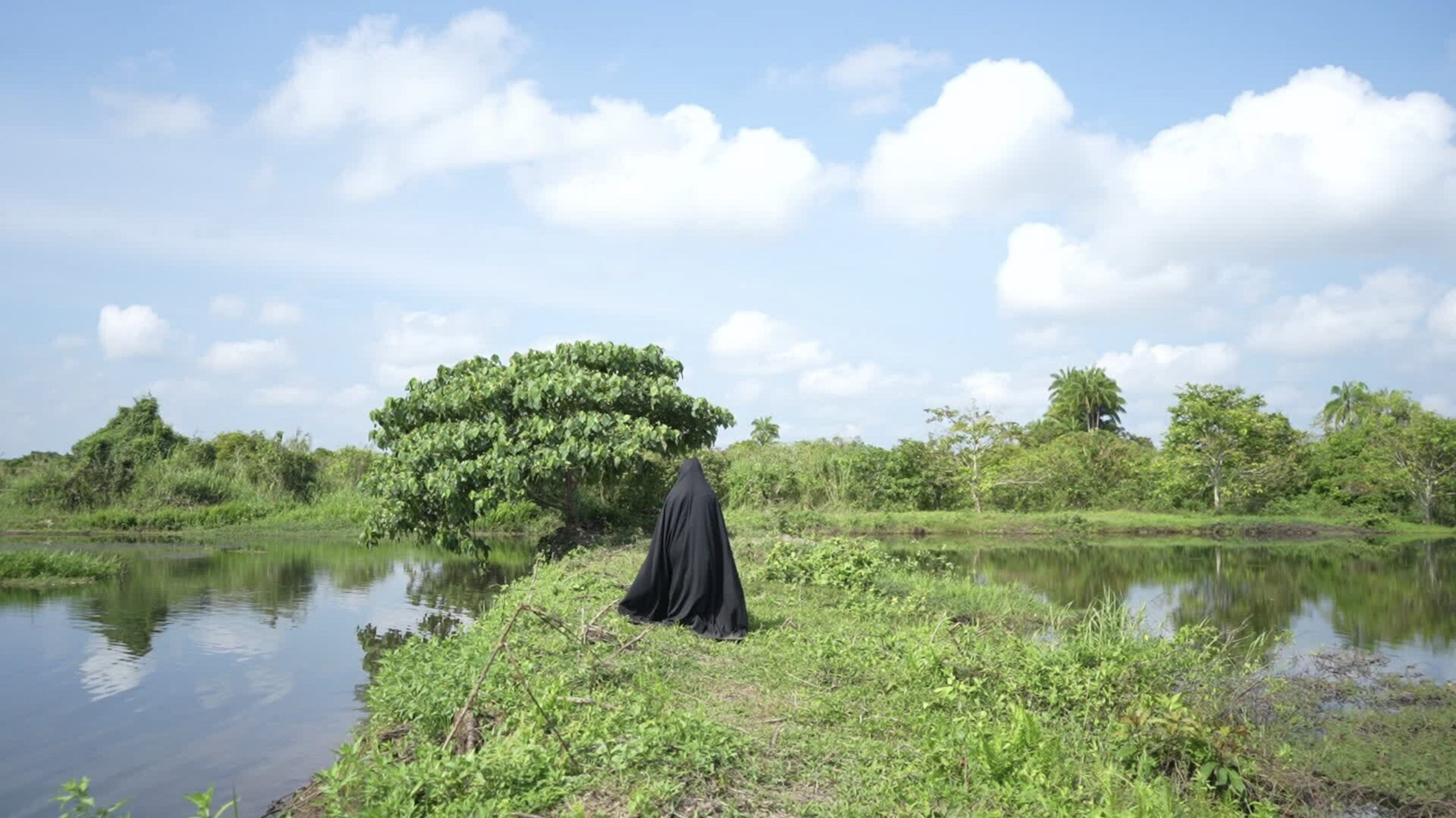
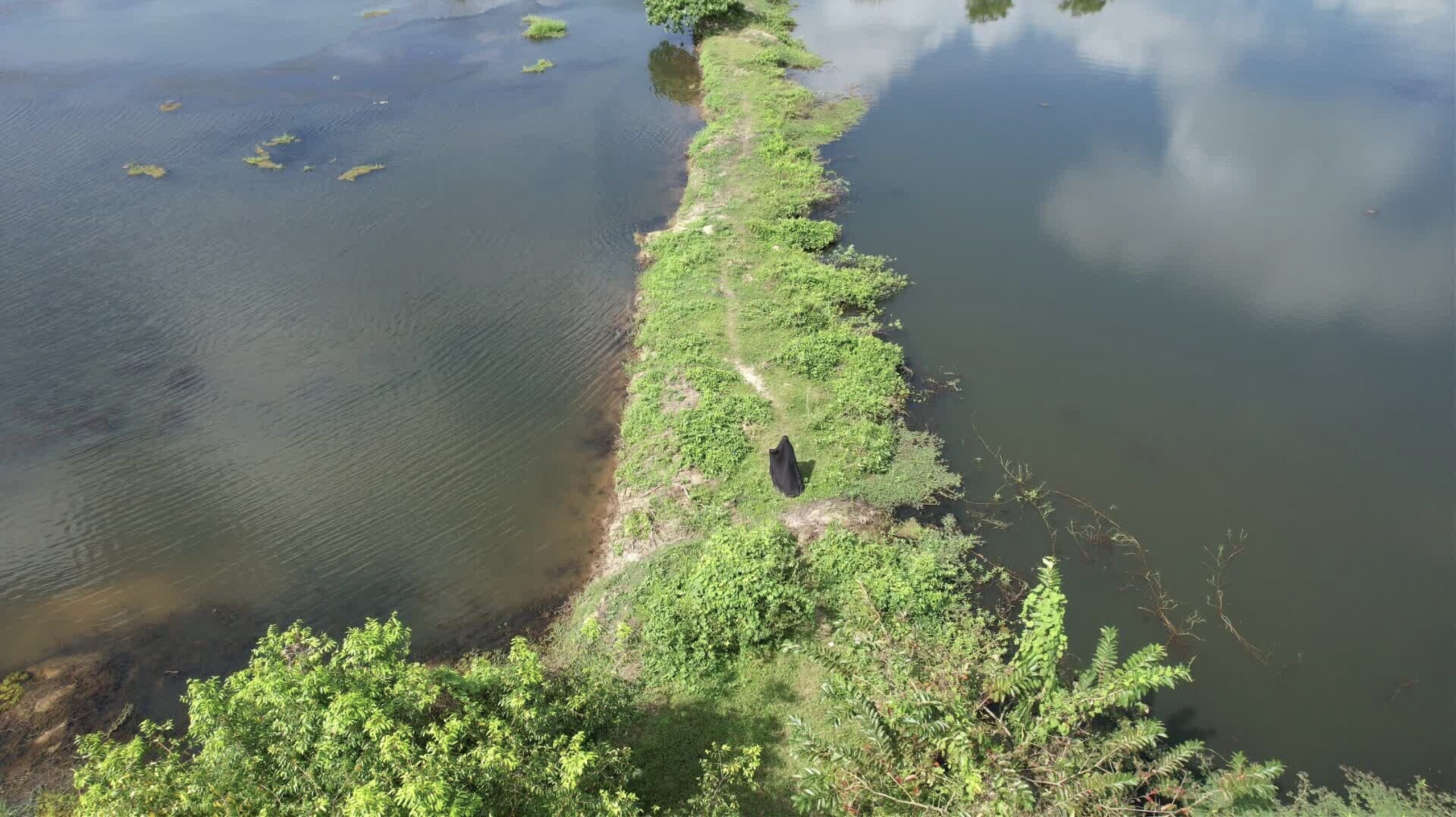
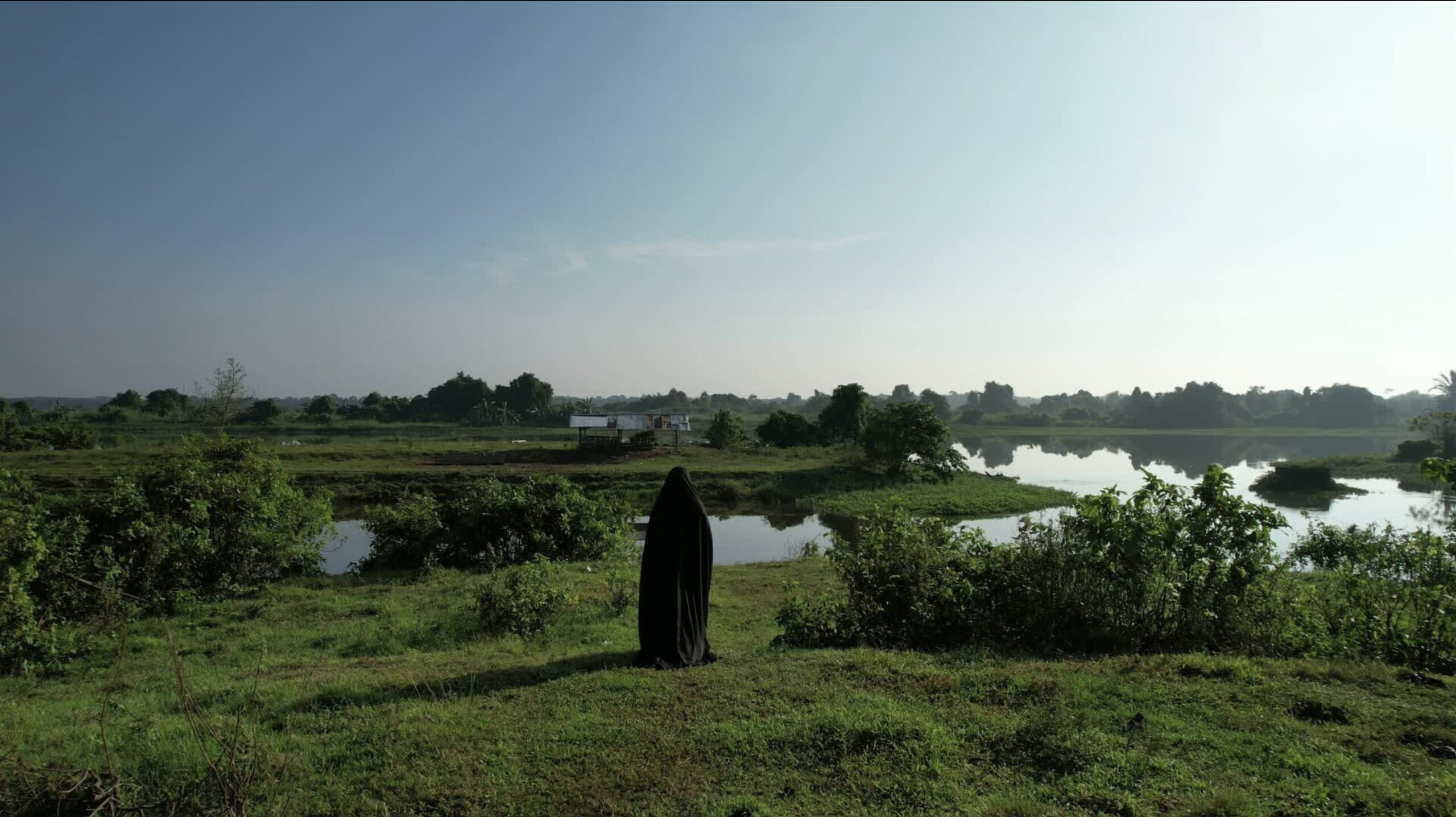
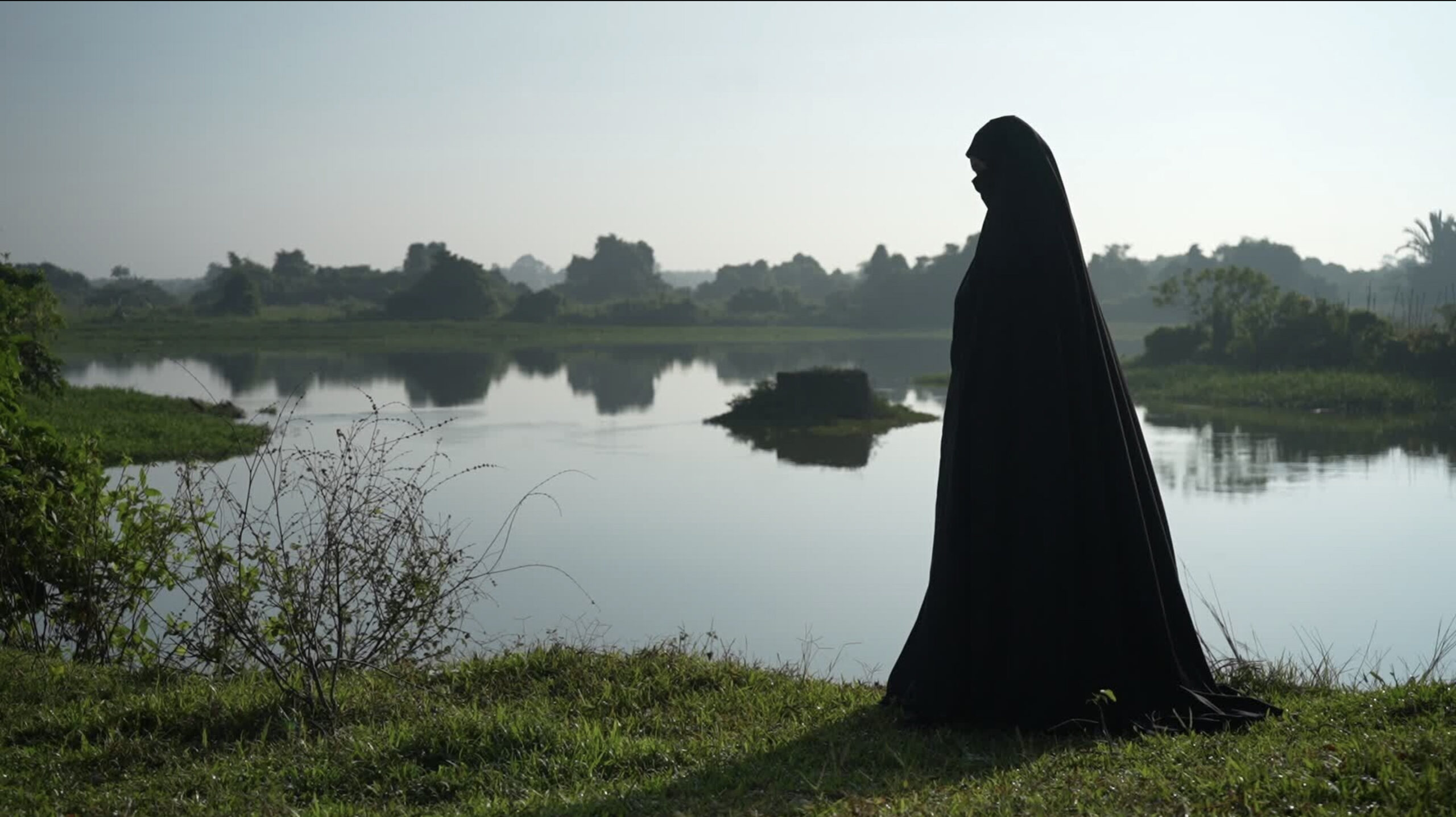
Abstract :
The term “Talakong” refers to a special set of sarongs that hold deep meaning within Islam, particularly in understanding the role of women and their connection to Allah. These sarongs are not just clothing but symbols of faith and a way to seek blessings. They are adorned with intricate patterns that tell stories of the Patani region in Thailand and the artist’s family’s history there. The sarongs also represent the artist’s personal journey as a woman, especially her grief over losing her father during events in the southern border provinces. Through the practice of “du’a,” or supplication, Muslims seek solace and guidance from Allah, which is an essential ritual in Islam. The creation of these sarongs reflects the diverse aspects of Islamic culture and history, including the role of women in various aspects of life such as warfare, politics, childbirth, and family support. It also explores the connection between migration and the spread of Islam to the artist’s homeland. Overall, the sarongs serve as a medium to convey stories, traditions, and beliefs, while also honoring the resilience and agency of women in Muslim communities.
Objectives :
The objective:
1. To study and explore the history of Islam, tracing its evolution and connections from its origins to the context of the Patani region, and to analyze the cultural norms and religious practices of Islam through creative works.
2. To create contemporary fabric patterns through women’s sarongs and to generate visual art to reflect the social dimension of the southern border provinces of Thailand through the sarong ensemble.
Conceptual Framework :
The use of “talakobg” serves as a symbol drawn from the daily lives of Muslim women who follow Islam, particularly in their commitment to the five daily prayers. This practice reflects their devotion to the one God.
By bringing everyday experiences to life through personal journeys, there’s a parallel to exploring past events and reflecting on the present to shape a better future for humanity. This exploration involves both insiders and outsiders, with insiders facing risks while outsiders interpret meanings for insiders. This interconnectedness within the global community underscores the importance of using video as a medium to foster new experiences and insights for local communities, rather than solely relying on past experiences for understanding.
The narrative also reflects on Islam’s journey from its origins, both physically and spiritually, passed down through generations, prompting reflection on the existence of life itself. These mechanisms are crucial for questioning societal relationships among humans, portrayed through reflective video art that utilizes sound to guide various unfolding narratives.
Process / Methodology :
1. Data Compilation: Collect and organize information from primary documents.
2. Field Investigation: Conduct comprehensive research in the southern border provinces.
3. Data Analysis: Evaluate findings to derive insights and conclusions.
4. Pattern Development:Design intricate sarong patterns reflective of cultural nuances.
5. Video Production: Craft compelling visual narratives featuring talakong as a central motif.
6. Expert Review: Solicit feedback and validation from domain experts and collaborating artists.
7. Exhibition Coordination: Plan and execute public exhibitions to showcase the artistic endeavor.
Techniques and Materials :
Video Art and Mixed Media Art
Result / Conclusion :
The video art piece “Talang” seeks to emphasize the importance of Muslim women and their adherence to Islam. It explores the use of “talang” in the “lamat” ceremony, where supplication and seeking blessings from God occur. Through this, it delves into the history of Muslims in Thailand’s southern border provinces, showcasing how Islamic principles endure across time and regions.
The piece aims to shed light on the atrocities committed by humans for their own gain, using “talang” as a lens to examine past events and changes within the Muslim community’s beliefs and way of life. The central motif of “talang” is woven throughout the narrative by synthesizing patterns from various sources, including architecture, clothing, household items, and ornaments, spanning from the original Malayu Patani region to the present southern border provinces.
Through on-site exploration, observation, and interviews, the artistic process focuses on women adorned in “talang” garments, embellished with bullets symbolizing unknown usage. The patterns drawn on each bullet represent synthesis across significant areas of the southern border provinces, linked to historical migrations and beliefs.
Overall, “Talang” prompts viewers to question contemporary society about ongoing conflicts, even as time progresses into the future.
References :
Ararong Sri-ong, Chanyawit Kettratsiri. (2009). The World of Islam and Muslims. Samut Prakan: Toyota Thailand Foundation Publishing.
Kittit Kanphai. (2008). Psychology of Communication. Bangkok: Herribone Printing.
Kultida Sampa Buddha and colleagues. (2009). Power of Life, Power of Spirit: Fifty Voices from Women and Men in Southern Border. Bangkok: Sunthakarn Printing.
Khon Khao. (2011). Unraveling the Mystery of “Southern Fire”. Bangkok: S. Asia Press.
Jadullah Jasaoha. (2012). Art Exhibition “Identity of Local Malay People in Pattani”. Bangkok: Queen Sirikit Art Gallery.
Chanonrong Bunmun and colleagues. (2011). Emotion and Ethics. Bangkok: Vipas Printing Office.
Chumsak Nararatwong. (2009). Trapped in the Southern Fire Crisis. 2nd ed. Bangkok: United Hearts Office.
Chumsak Nararatwong. (2009). Under Memory. 2nd ed. Bangkok: United Hearts Office.
Chayanat Supachalasai. (2012). Chosk Lakong: 10 Visions in the Borderland of Life. Bangkok: Siam Pratit Printing.
Chonida Jarayaphat. (2008). Confronting Global Threats: The 21st Century and Sustainable Security. Bangkok: Koobfai Publishing Project.
Chalood Nimsemoe. (2001). Components of Art. Bangkok: Thai Cultural Commerce.
Chumporn Sangkapreecha. (1988). Philosophy and Political Theory on Human Nature. Bangkok: Thammasat University Press.
Silvia Martin. Art Video.
Supham Utsaman. (2004). Islam: The Path to Peace. Bangkok: Islamic Academic Press.
Taweerat Kuldumrongwiwat. (2008). Psychology of Design. Phuket: Rajabhat Phuket University.
Tham Khonsanjan. (2007). “Under Fire… for Sacrificial Teachers.” Bangkok: Viriyath Business.
Thanes Apornsuriya. (2012). The Origin of the Theory of Dividing Borders in Southern Thailand. 3rd ed. Bangkok: Social Science and Humanities Textbook Project Foundation.
Piyasit Nulsathaporn. (2012). The Sequence of Origin and Roots of Human Inequality. Bangkok: Siam Pratit Printing.
Pakorn Singhsuriya. (2012). THE BIG QUESTIONS: Philosophy 20 Important Questions. Bangkok: Matichon Publishing.
Pramuan Pengchan. (2012). Walking in Peace: Pattani. Bangkok: Charoen Dee Man Kong Printing.
Prasert Chaithon. (2009). “He’s Looking for It (MP Najmuddin Den) Rebellion – Robbery.” Bangkok: Saiyai Prachathorn Publishing.
Prachya Pimanman. (2011). Joint Contemporary Art Exhibition “Atta: Southern Path”. Bangkok: At Borngallery Bangmarkee Market Park.
Papajon Nuntapakdee. (2010). Principles and Processes of Graphic Design. Nonthaburi: ID9.
Pinyasorn Rotcharoen. (2006). “Basic Knowledge of Thai Typeface Design.” Retrieved from http://www.font.com/forum/index.php/topic,5296.0.
Pira Pongmanakit. (2011). The Epic of Three Southern Border Provinces. Bangkok: Rung Rueng Sasansarn Printing.
Phannaphon Sarochamarnsat. (1995). The Role of Islamic Books in Thailand. Master’s thesis, Department of Journalism, Graduate School, Chulalongkorn University.
Muhhamad Ayub Pathan. (2013). Peace Process in Pattani in the ASEAN Context. Pattani: Phipop Printing.
Raksamon Songthep. (2005). Political Literature Rangwan Award 3rd Sky Eyeglasses. Tanah Umi Mapu. Bangkok: Tathata Publication.
Virapong Phanthong. (2007). Where It Happened. Bangkok: Open Books Publishing.
Wirun Tangcharan. (2010). Vision of Art. Bangkok: Sunti Service Printing.
Wirun Tangcharan. (1992). History of Art and Design. Bangkok: Sunti Printing.
Supharat Janthawannich. (2006). Violence in the Mist: What is Seen and Happens in the Field of Three Southern Border Provinces. Bangkok: Kroengkan Publishing Project.
Sirioro Wischawut and authors. (2004). General Psychology. Bangkok: Chulalongkorn University Printing.
Suny Pornpanchakit. (2010). The Habits of the Mind of Michel Foucault: From the Speech of Individuals to the Turning Point of the Self. 2nd ed. Chiang Mai: Chiang Mai University Printing.
Issara Santrasat. (2008). “Art Must Be a Part of Our Lives, Otherwise, It Will Lack Honesty.” Tasen Publishing.
Issara Santrasat. (2008). “Avoiding the Search for New Patterns, No Matter What, It Means Avoiding Confronting the History of Art.” Tasen Publishing.
Anan Kanchanaphun. (2012). “Thinking Like Michel Foucault: From Individual Discourse to Subject Turning Point.” 2nd ed. Chiang Mai: Chiang Mai University Printing.
Isharath Santsathian. (2010). Nobimohammed: The Compassion of Humanity. Bangkok: Mark M Printing.
Ammar Siamvala. (2006). Conflict between Development and Social Conditions in the 3 Southern Border Provinces. Bangkok: Faculty of Business Administration Press, University of the Thai Chamber of Commerce.
Abdulmajid Abdulrouf. (2008). Eimanan Aon. Songkhla: Taoba-Hu Publishing.
Ek Tangsabta and Aroror Puengcharoen. (2009). “Three Southern Border Provinces Problems and Policy Recommendations.” Bangkok: We Print.
Ariya Ratschamansuk. (2010). “Knowing, Sleeping, and Art: Matters of Aesthetics and Characteristics Related to Art.” Bangkok: Komsai Publishing.
Taweerat Kuldumrongwiwat. (2008). Psychology of Design. Phuket: Phuket Rajabhat University.
Tham Konsan. (2007). “Southern Fire Chronicles… for Sacrificial Teachers.” Bangkok: Viriya Business.
Thanes Aparan Suwann. (2012). The Origin of the Theory of Dividing Borders in Southern Thailand. 3rd ed. Bangkok: Social Science and Humanities Textbook Project Foundation.
Piyasit Nulsathaporn. (2012). The Sequence of Origin and Roots of Human Inequality. Bangkok: Siam Pratit Publishing.
Pakorn Singhsuriya. (2012). THE BIG QUESTIONS: Philosophy 20 Important Questions. Bangkok: Matichon Publishing.
Pramuan Pengchan. (2012). Walking in Peace: Pattani. Bangkok: Charoen Dee Man Kong Printing.
Prasit Chaithongpan. (2009). “He’s Accusing (MP Najmuddin Din) of Rebellion – Robbery.” Bangkok: Saiyai Prachathorn Publishing.
Prachya Pimanman. (2011). Contemporary Painting Exhibition “Atta: Southern Path”. Bangkok: Art Bangkagallery Bangmarkee Market Park.
Papajon Nuntapakdee. (2010). Principles and Processes of Graphic Design. Nonthaburi: ID9.
Pinyasorn Rotcharoen. (2006). “Basic Knowledge of Thai Typeface Design.” Retrieved from http://www.font.com/forum/index.php/topic,5296.0.
Pira Pongmanakit. (2011). The Epic of Three Southern Border Provinces. Bangkok: Rung Rueng Sasansarn Printing.
Phannaphon Sarochamarnsat. (1995). The Role of Islamic Books in Thailand. Master’s thesis, Department of Journalism, Graduate School, Chulalongkorn University.
Muhammad Ayub Pathan. (2013). Peace Process in Pattani in the ASEAN Context. Pattani: Phipop Printing.
Wirun Tangcharoen. (2002). History of Art and Design. Bangkok: Santikarn Publishing.
Supharat Janchatchafai. (2006). Violence in the Mist: What is Seen and Happening in the Southern Border Provinces. Bangkok: Kobfai Publishing Project.
Sirior Vichachawut and the Writing Team. (2004). General Psychology. Bangkok: Thammasat University Press.
Sunee Prasongbandit. (2010). The Habitus Theory of Pierre Bourdieu and Anthropological Theory. Bangkok: Manussawin Srinthorn Center (Mass Organization).
Supachai Dantakul. (2009). 5 Years of Southern Fire. Quarterly Reading Journal, 7(1), 117.
Supang Jantawanich. (2008). Qualitative Research Methods. Bangkok: Dan Suwatakan Printing.
Supang Jantawanich. (2012). Social Theory. 5th ed. Bangkok: Tawi Print.
Surachai Wankaeo. (2007). End of the Fire. Bangkok: Thamada Press.
Surachai Wankaeo. (2008). Origin of the Fire. Bangkok: Thamada Press.
Sophak Suvann. (1993). Pulao Kong. Bangkok: Banakit Trading.
Yuta Grosenik. (2014). “Art Must Be Part of Our Lives, Otherwise, it Will Be Devoid of Honesty.” Tasen Publishing.
Yuta Grosenik. (2014). “Avoiding the Search for New Patterns, No Matter How, Means Avoiding Confrontation with the History of Art.” Tasen Publishing.
Anan Kanjanapant. (2012). Thinking like Michel Foucault: From Individual Discourse to the Turning Point of Identity. 2nd ed. Chiang Mai: Chiang Mai University Press.
Sara Santi Sansan. (2010). Nobimuhammad: Humanity’s Compassion. Bangkok: Mark M Printing.
Ammar Siamwala. (2006). Conflict between Development and Social Conditions in the 3 Southern Border Provinces. Bangkok: University of Business Administration Press.
Abdulmajeed Abdulruuf. (2008). Eimanoon. Songkhla: Taoba Hu Publishing.
Ek Tangsataphatwannawat and Aror Phujaroen. (2009). Problems in the 3 Southern Border Provinces: Policy Recommendations. Bangkok: We Print.
Araya Ratsamjanjermksuk. (2009). “Understanding Art: Issues in Aesthetics and Identity in Art.” Bangkok: Komsamai Publishing.
Accad (2003): According to Ibn Taymiya, although only some Muslims accept the textual veracity of the entire Bible, most Muslims will grant the veracity of most of it. * Esposito (1998), pp.6,12
Berry Man Gregg. (1990). Notes on graphic design and visual communication.
California: Crisp Publications.
Edmund Burkc Feldman. (1967). Image And Idea. United States of America.
Marc English. (2000). Design Identity. United States of America.
Philip Rawson. (1987). Design. Hong Kong: Mandarin offset.